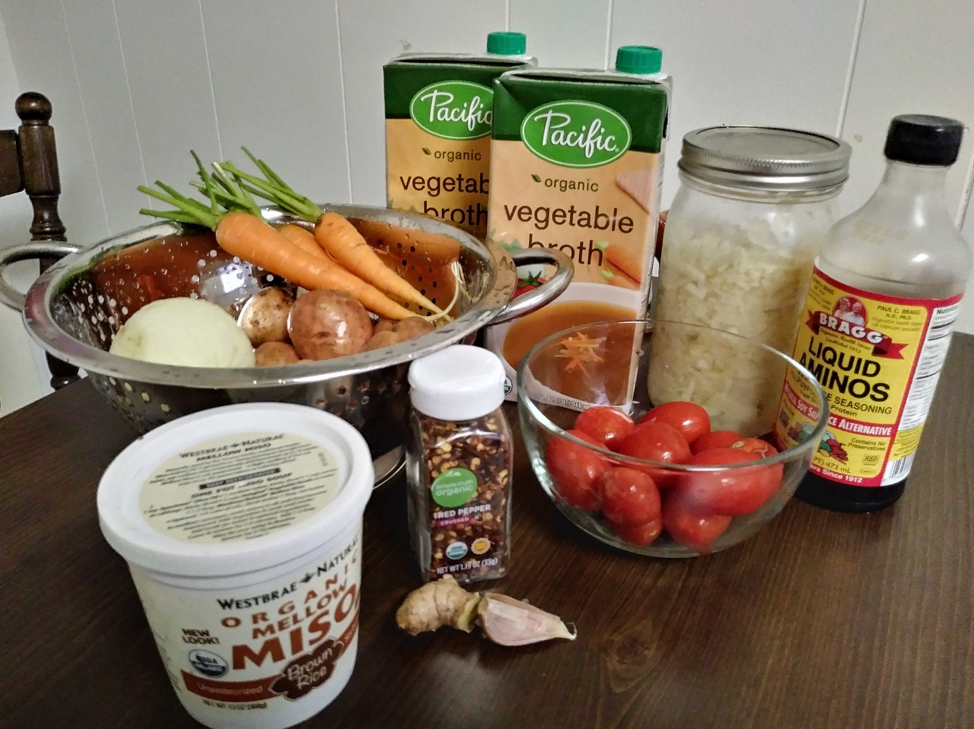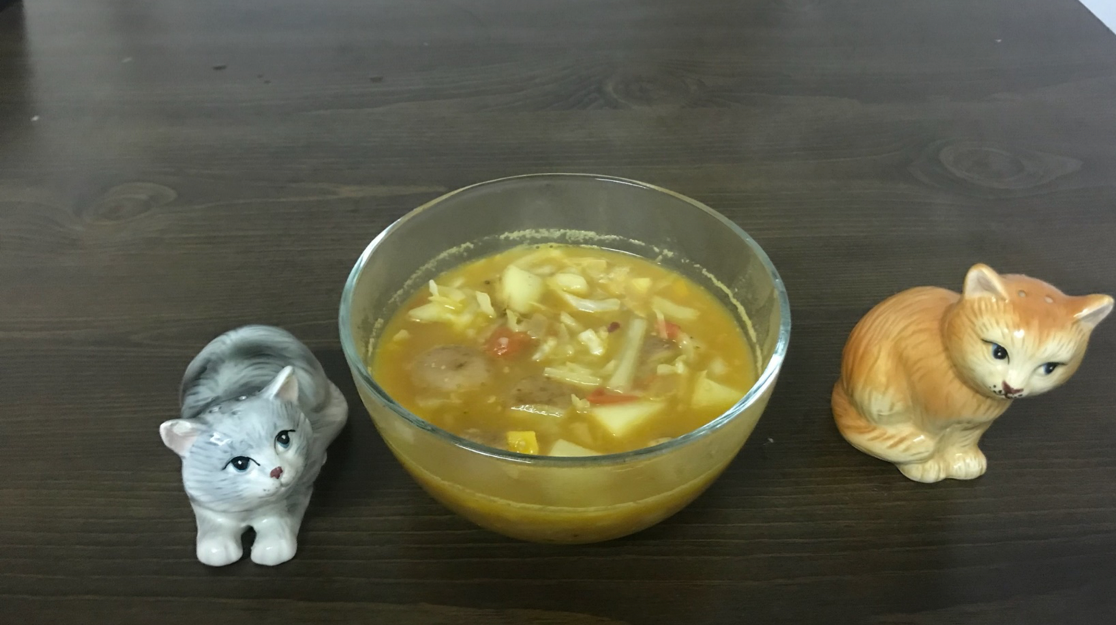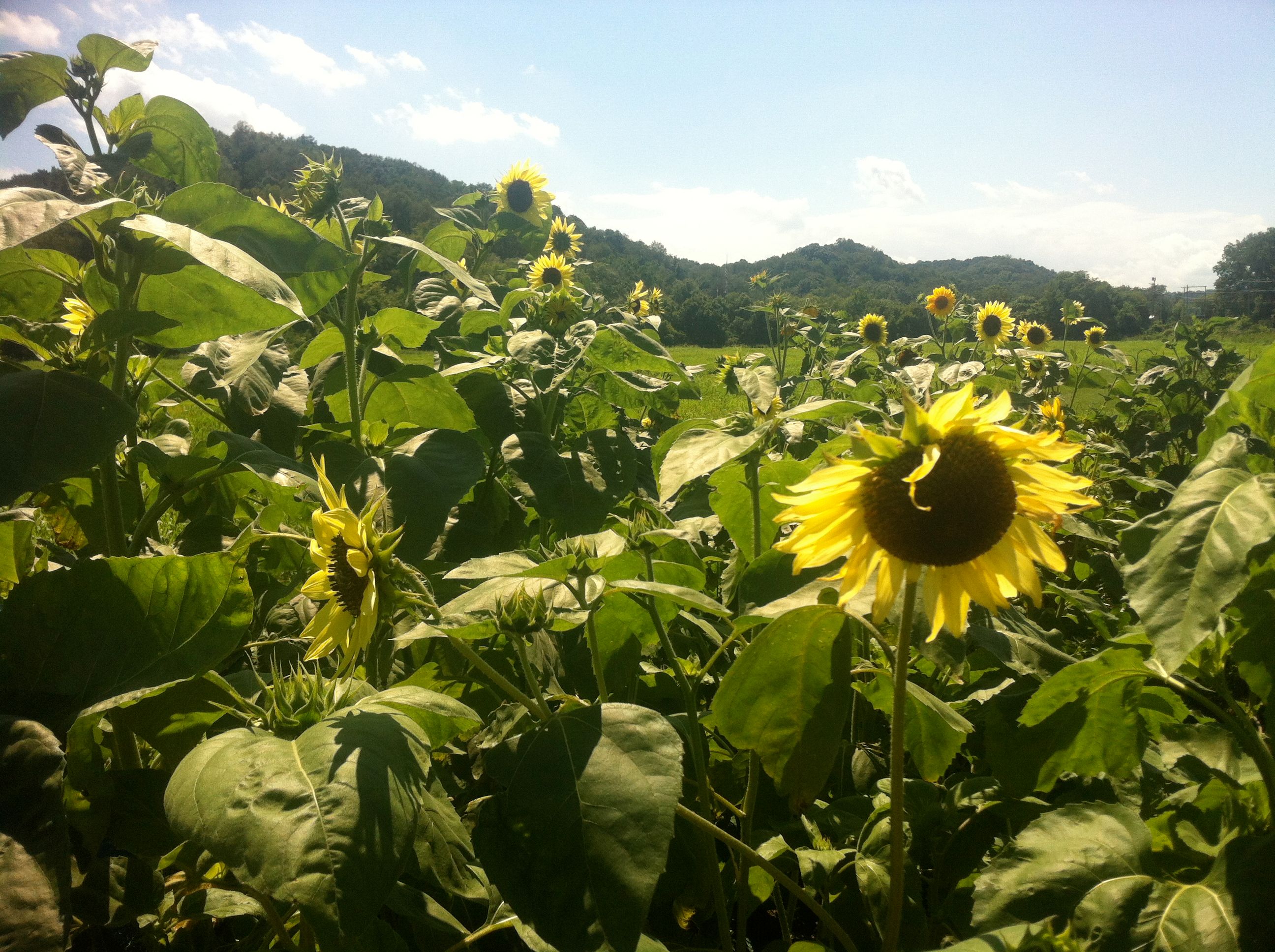I would like to carry on the torch for Affordable & Fresh from my predecessor, Moira Snuffer. It is a great space to illustrate recipes that are made with seasonal, fresh, nutritious and affordable items!
I have decided to embark on a journey with cabbage. Cabbage will be in season through October, and fermenting cabbage yourself will keep it available for use months beyond its harvest or purchase.
Cabbage is extremely nutritious! ½ cup of cabbage provides 45% of the daily recommended amount of Vitamin C. It is also an excellent source of vitamins A, K, and B6; and minerals folate, and manganese. Cabbage also contains quercetin, an antioxidant that is a natural antihistamine that can benefit allergy sufferers.
Sources: National Nutrient Database for Standard Reference & arizona.edu
I began my journey with homemade sauerkraut using whey, sea salt and cabbages from the Chesterhill Produce Auction.
| Ingredient | Amount |
|---|---|
| Medium cabbage (cored and shredded/thinly sliced | 1 |
| Sea Salt | 2 tsp.(up to 1 tbsp.) |
| Whey (optional: for casein/dairy free recipe, omit and use twice the sea salt) | 4 tbsp. |
| Caraway seeds (optional) | 1 tbsp. |
The whey was given to me by the Donation Station program manager, Susie Huser. If you do not have any whey handy or would like your sauerkraut to be vegan, simply replace the whey with double the amount of sea salt!
Preparation:
1. In a large container, mix all of the ingredients together. Then pound with a wooden pounder or food hammer for 10 minutes to release juices. Or just get in there with clean hands! I did not have a pounder at my apartment so I chose to use my hands and it was incredibly effective (as well as a good hand exercise).
2. Then place in a wide-mouth, quart-sized mason jar and press down firmly until the juices cover the top of the cabbage. The top of the cabbage should be at least 1 in. below the top of the jar.
3. Cover tightly (but not too, too tight*) and keep at room temperature for 3 days before transferring to cold storage.
4. The sauerkraut can be eaten right away but, like many things, it improves with age!
Note: *some of my jars nearly exploded because of the pressure built up from the fermentation process.. I would suggest going as tight as possible and then doing a quarter turn backwards to let some gas escape.
Source: thenourishingcook.com
I continued my journey with the Eastern European dish Kapuśniak, which is made with fresh cabbage during the summer & fall months and sauerkraut in the winter time.
I specifically wanted a recipe with ginger and garlic since I could feel a little cold coming on, and ended up with a warm and hearty dish that was quick to prepare and produced many servings.

| Ingredient | Amount |
|---|---|
| Medium potatos, cut into small cubes | 3-4 |
| Large carrot, coarsely grated | 1 |
| Small onion, finely chopped | 1 |
| Cherry tomatoes, diced | Handfull |
| White miso paste (subsitute for soy sauce or liquid aminos) | 1 tbsp. |
| Fresh ginger, thinly sliced | 3 cm piece |
| Large garlic clove, sliced or minced | 1 |
| Chinese chili flakes (optional) | 1 tsp. |
| Sauerkraut | About 2 cups |
| Vegetable stock | 2 liters |
| Olive oil, for cooking | 1 tbsp. |
Preparation:
1. Heat olive oil in a large pot on Medium-High heat. Add onion for about 4 mins. Then add garlic for about 30 seconds.
2. Add potatoes and carrots for 5 minutes. Then add ginger, miso paste, chili flakes and tomatoes. Stir constantly for about 2 minutes.
3. Add vegetable stock to pot and boil, then reduce to simmer for 10 minutes. (I only used 1 L and was successful and still had a large portion of soup)
4. Add sauerkraut and cook until tender but still crisp.
Serve warm and top with cilantro and green onion if desired!
Source: bakergirl.net


